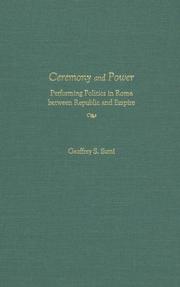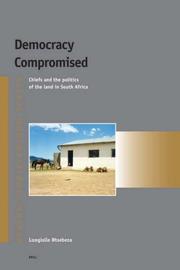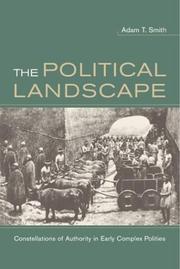| Listing 1 - 10 of 20 | << page >> |
Sort by
|
Book
ISBN: 3205209036 3205209044 Year: 2019 Publisher: Böhlau
Abstract | Keywords | Export | Availability | Bookmark
 Loading...
Loading...Choose an application
- Reference Manager
- EndNote
- RefWorks (Direct export to RefWorks)
Between 1810 and 1813 the Master of Ceremonies Count Gundacker Heinrich Wurmbrand drafted an „Etiquette-Normale für den österreichischen Kaiserhof“, which is a unique source for the reconstruction of everyday ceremonies at the Viennese court after the Napoleonic era. The text define the role of the Emperor, the ranks of the members of his entourage and the status of the court servants in a complex, symbolic system of relations. Court and court society are presented as a well-ordered mechanism to celebrate the dignity and rank of the Austrian Empire invented in 1804 and to legitimize it through symbolic communication.
Political customs and rites. --- Customs and rites, Political --- Political rituals --- Rituals, Political --- Manners and customs --- Political anthropology --- Rites and ceremonies

ISBN: 128259382X 9786612593826 0472025929 9780472025923 9781282593824 6612593822 9780472115174 0472115170 9780472036660 0472036661 0472115170 9780472115174 Year: 2005 Publisher: Ann Arbor University of Michigan Press
Abstract | Keywords | Export | Availability | Bookmark
 Loading...
Loading...Choose an application
- Reference Manager
- EndNote
- RefWorks (Direct export to RefWorks)
Political customs and rites --- Rites and ceremonies --- Customs and rites, Political --- Political rituals --- Rituals, Political --- Manners and customs --- Political anthropology --- Rome --- Politics and government
Book
ISBN: 1282398415 9786612398414 9047433378 9789047433378 9781282398412 9789004166578 9004166572 6612398418 Year: 2008 Publisher: Leiden Boston Brill
Abstract | Keywords | Export | Availability | Bookmark
 Loading...
Loading...Choose an application
- Reference Manager
- EndNote
- RefWorks (Direct export to RefWorks)
Referring, by way of example, to the chronicler's story about a dynastic conflict in medieval Poland, this book offers an insight into the modes of using ritual as an effective tool of political action in the Middle Ages—both in the practice of political entreprising, and on the level of narrative information about that practice—and then reflects about the nature of the relationship between the reality of the written account and the reality of the practical activities described in it. It demonstrates the ways in which the reality of the narrative account and the reality of practics—ritual-in-text and ritual-in-performance—overlaid and interlaced one another, and exercised a mutual impact, thereby jointly creating a framework within which, in the earlier and high Middle Ages, political activity took place.
Political customs and rites --- Customs and rites, Political --- Political rituals --- Rituals, Political --- Manners and customs --- Political anthropology --- Rites and ceremonies --- History. --- Boleslaw --- Poland --- Politics and government
Book
ISBN: 1477321454 1477321438 Year: 2020 Publisher: Austin, Texas : University of Texas Press,
Abstract | Keywords | Export | Availability | Bookmark
 Loading...
Loading...Choose an application
- Reference Manager
- EndNote
- RefWorks (Direct export to RefWorks)
Since 1898, residents of Laredo, Texas, and Nuevo Laredo, Tamaulipas, have reached across the US-Mexico border to celebrate George Washington's birthday. The celebration can last a whole month, with parade goers reveling in American and Mexican symbols; George Washington saluting; and “Pocahontas” riding on horseback. An international bridge ceremony, the heart and soul of the festivities, features children from both sides of the border marching toward each other to link the cities with an embrace. ¡Viva George! offers an ethnography and a history of this celebration, which emerges as both symbol and substance of cross-border community life. Anthropologist and Laredo native Elaine A. Peña shows how generations of border officials, civil society organizers, and everyday people have used the bridge ritual to protect shared economic and security interests as well as negotiate tensions amid natural disasters, drug-war violence, and immigration debates. Drawing on previously unknown sources and extensive fieldwork, Peña finds that border enactments like Washington's birthday are more than goodwill gestures. From the Rio Grande to the 38th Parallel, they do the meaningful political work that partisan polemics cannot.
Festivals --- Political customs and rites --- History --- Days --- Manners and customs --- Anniversaries --- Fasts and feasts --- Pageants --- Processions --- Customs and rites, Political --- Political rituals --- Rituals, Political --- Political anthropology --- Rites and ceremonies

ISBN: 3110191016 9783110191011 3110926598 Year: 2006 Volume: 10 Publisher: Berlin ; New York : W. de Gruyter,
Abstract | Keywords | Export | Availability | Bookmark
 Loading...
Loading...Choose an application
- Reference Manager
- EndNote
- RefWorks (Direct export to RefWorks)
Der Sammelband trägt zur althistorischen Diskussion über Charakter und Form politischen Handelns in der römischen Kaiserzeit bei. Er konzentriert sich auf den Osten des Imperium Romanum während der gesamten Kaiserzeit einschließlich der Spätantike. An konkreten Beispielen gehen die einzelnen Beiträge der Frage nach, welche Handlungsspielräume die Kaiser - aber auch auch andere Instanzen wie Statthalter und Städte - hatten, und ob sich in ihrem Handeln ein politischer Gestaltungswille erkennen lässt, der über das bloße Reagieren auf die Anstöße von Untertanen und Untergebenen hinausging. This collected volume contributes to the discussion among ancient historians of the character and form of political action in Imperial Rome. It concentrates on the East of the Imperium Romanum for the whole duration of the Imperial Era, including Late Antiquity. Using concrete examples, the individual papers explore the question of how much latitude and freedom of action was exercised by the emperors - and by other authorities, such as governors and cities - and whether their actions display a political strategy which went beyond merely reacting to impulses from their subjects and subordinates.
Political customs and rites --- Customs and rites, Political --- Political rituals --- Rituals, Political --- Manners and customs --- Political anthropology --- Rites and ceremonies --- Rome --- Rim --- Roman Empire --- Roman Republic (510-30 B.C.) --- Romi (Empire) --- Byzantine Empire --- Rome (Italy) --- Politics and government --- Classical antiquity/political institutions. --- classical antiquity/Rome. --- history/Rome. --- history/constitution.

ISBN: 1280868805 9786610868803 1429453540 9047407903 1433706296 9781429453547 9789004144828 900414482X 9781433706295 900414482X 9781280868801 6610868808 9789047407904 Year: 2005 Publisher: Leiden Brill
Abstract | Keywords | Export | Availability | Bookmark
 Loading...
Loading...Choose an application
- Reference Manager
- EndNote
- RefWorks (Direct export to RefWorks)
This book argues that the promulgation of the Traditional Leadership and Governance Framework and Communal Land Rights Acts runs the risk of compromising South Africa's democracy. The acts establish traditional councils with land administration powers. These structures are dominated by unelected members.
Chiefdoms --- Tribal government --- Political customs and rites --- Democracy --- Self-government --- Political science --- Equality --- Representative government and representation --- Republics --- Customs and rites, Political --- Political rituals --- Rituals, Political --- Manners and customs --- Political anthropology --- Rites and ceremonies --- Tribes --- Chieftaincies --- Chieftainships --- Xalanga (South Africa) --- Xhalanga (South Africa) --- Politics and government. --- Social conditions. --- Political sociology --- Political systems --- South Africa --- Democracy. --- Descriptive sociology --- Social conditions --- Social history --- History --- Sociology
Book
ISBN: 1138110639 1315728680 1317543661 1844658848 9781317543664 9781317543657 1317543653 9781317543640 1317543645 9781315728681 9781908049209 9781138110632 Year: 2012 Publisher: Durham : Acumen Publishing,
Abstract | Keywords | Export | Availability | Bookmark
 Loading...
Loading...Choose an application
- Reference Manager
- EndNote
- RefWorks (Direct export to RefWorks)
Many West African societies have egalitarian political systems, with non-centralised distributions of power. Egalitarian Revolution in the Savanna analyses a wide range of archaeological data to explore the development of such societies. The volume offers a detailed case study of the village settlement of Kirikongo in western Burkina Faso. Over the course of the first millennium, this single homestead extended control over a growing community. The book argues that the decentralization of power in the twelfth century BCE radically transformed this society, changing gender roles, public activities, pottery making and iron-working. Egalitarian Revolution in the Savanna will be of interest to students of political science, anthropology, archaeology and the history of West Africa.
Political customs and rites --- Excavations (Archaeology) --- Human settlements --- Archaeology and history --- Historical archaeology --- History and archaeology --- History --- Habitat, Human --- Human habitat --- Settlements, Human --- Human ecology --- Human geography --- Population --- Sociology --- Land settlement --- Archaeological digs --- Archaeological excavations --- Digs (Archaeology) --- Excavation sites (Archaeology) --- Ruins --- Sites, Excavation (Archaeology) --- Archaeology --- Customs and rites, Political --- Political rituals --- Rituals, Political --- Manners and customs --- Political anthropology --- Rites and ceremonies --- History. --- Africa, West --- Africa, Western --- West Africa --- Western Africa --- Antiquities.

ISBN: 1555878768 9781555878764 1626371237 Year: 2000 Publisher: Boulder, Colo. Lynne Rienner
Abstract | Keywords | Export | Availability | Bookmark
 Loading...
Loading...Choose an application
- Reference Manager
- EndNote
- RefWorks (Direct export to RefWorks)
Persistence of violent conflict in Africa indicates that modern international methods are ineffective. This study examines traditional conflict management practices that can be found on the African continent, and looks at similar practices elsewhere, such as the Middle East and China, for comparison. Examples of African conflict management practices are presented, and their characteristics are discussed in the context of both internal meaning and external comparisons. Chapters are in sections on managing conflict in traditional African societies, other traditional approaches to reconciliation, and applying traditional methods to modern conflict management.
Polemology --- Sociology of culture --- Africa --- Ethnicity --- Culture conflict --- Social conflict --- Conflict management --- Political customs and rites --- Ethnicité --- Conflit culturel --- Conflits sociaux --- Gestion des conflits --- Moeurs politiques --- Afrique --- Social life and customs. --- Politics and government. --- Moeurs et coutumes --- Politique et gouvernement --- #SBIB:39A11 --- #SBIB:39A73 --- #SBIB:327.5H20 --- Class conflict --- Class struggle --- Conflict, Social --- Social tensions --- Interpersonal conflict --- Social psychology --- Sociology --- Cultural conflict --- Culture wars --- Conflict of cultures --- Intercultural conflict --- Antropologie : socio-politieke structuren en relaties --- Etnografie: Afrika --- Vredesonderzoek: algemeen --- Ethnicité --- Customs and rites, Political --- Political rituals --- Rituals, Political --- Manners and customs --- Political anthropology --- Rites and ceremonies
Book
ISBN: 9781107050594 9781107279599 9781107646131 1107646138 1107050596 1108110312 1108109632 1108105548 110811167X 1107279593 1108110991 1108114393 1108113710 9781108114394 Year: 2018 Volume: *48 Publisher: Cambridge Cambridge University Press
Abstract | Keywords | Export | Availability | Bookmark
 Loading...
Loading...Choose an application
- Reference Manager
- EndNote
- RefWorks (Direct export to RefWorks)
In this new book on early modern diplomacy, Jan Hennings explores the relationship between European powers and Russia beyond the conventional East-West divide from the Peace of Westphalia to the reign of Peter the Great. He examines how, at a moment of new departure in both Europe and Russia, the norms shaping diplomatic practice emerged from the complex relations and direct encounters within the world of princely courts rather than from incompatible political cultures. He makes clear the connections between dynastic representation, politics and foreign relations and shows that Russia, despite its perceived isolation and cultural distinctiveness, participated in the developments and transformations that were taking place more broadly in diplomacy. The central themes of this study are the interlocking manifestations of social hierarchy, monarchical honour and sovereign status in both text and ritual. Related issues of diplomatic customs, institutional structures, personnel, negotiation practice, international law, and the question of cultural transfer also figure prominently.
Diplomacy --- Political customs and rites --- Customs and rites, Political --- Political rituals --- Rituals, Political --- Manners and customs --- Political anthropology --- Rites and ceremonies --- History --- International relations --- History. --- Europe --- Russia --- Council of Europe countries --- Eastern Hemisphere --- Eurasia --- Foreign relations --- Kings and rulers --- Court and courtiers --- #KVHA:Cultuurgeschiedenis; Rusland --- #KVHA:Diplomatie; Rusland --- #KVHA:17de eeuw; Rusland --- #KVHA:Taalkunde; Russisch --- Russie --- Rossīi︠a︡ --- Rossīĭskai︠a︡ Imperīi︠a︡ --- Russia (Provisional government, 1917) --- Russia (Vremennoe pravitelʹstvo, 1917) --- Russland --- Ṛusastan --- Russia (Tymchasovyĭ uri︠a︡d, 1917) --- Russian Empire --- Rosja --- Russian S.F.S.R. --- Russia (Territory under White armies, 1918-1920)

ISBN: 9786612762857 052093699X 1282762850 1597348147 9780520936997 9781597348140 9781282762855 1417525630 9781417525638 0520237498 9780520237490 0520237501 9780520237506 6612762853 0520420608 Year: 2003 Publisher: Berkeley : University of California Press,
Abstract | Keywords | Export | Availability | Bookmark
 Loading...
Loading...Choose an application
- Reference Manager
- EndNote
- RefWorks (Direct export to RefWorks)
How do landscapes-defined in the broadest sense to incorporate the physical contours of the built environment, the aesthetics of form, and the imaginative reflections of spatial representations-contribute to the making of politics? Shifting through the archaeological, epigraphic, and artistic remains of early complex societies, this provocative and far-reaching book is the first systematic attempt to explain the links between spatial organization and politics from an anthropological point of view. The Classic-period Maya, the kingdom of Urartu, and the cities of early southern Mesopotamia provide the focal points for this multidimensional account of human polities. Are the cities and villages in which we live and work, the lands that are woven into our senses of cultural and personal identity, and the national territories we occupy merely stages on which historical processes and political rituals are enacted? Or do the forms of buildings and streets, the evocative sensibilities of architecture and vista, the aesthetics of place conjured in art and media constitute political landscapes-broad sets of spatial practices critical to the formation, operation, and overthrow of polities, regimes, and institutions? Smith brings together contemporary theoretical developments from geography and social theory with anthropological perspectives and archaeological data to pursue these questions.
Landscape assessment. --- Landscape archaeology --- Political anthropology. --- Assessment, Landscape --- Environmental perception --- Landscape evaluation --- Landscape perception --- Perception, Landscape --- Human ecology --- Land use --- Landscape protection --- Archaeology --- Cultural landscapes --- Anthropology, Political --- Government, Primitive --- Ethnology --- Political science --- Political aspects. --- Anthropological aspects --- Political anthropology --- Political aspects --- Landscape assessment --- anthropological. --- archaeologists. --- artistic works. --- classicists. --- complex societies. --- cultural identity. --- early societies. --- epigraphs. --- formation of governments. --- formation of polities. --- maya. --- national territories. --- nations. --- nonfiction. --- overthrow of regimes. --- physical world. --- political anthropology. --- political formation. --- political history. --- political institutions. --- political landscape. --- political power. --- political rituals. --- political science. --- social theory. --- systematic approach. --- textbooks. --- urartu.
| Listing 1 - 10 of 20 | << page >> |
Sort by
|

 Search
Search Feedback
Feedback About UniCat
About UniCat  Help
Help News
News